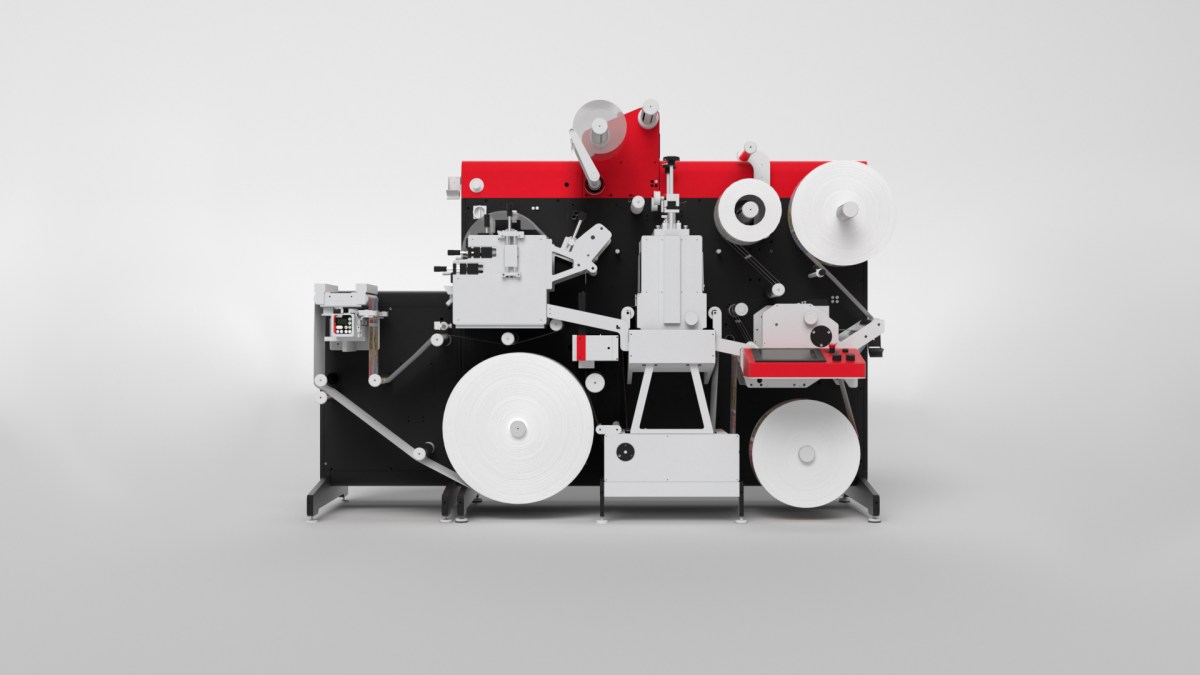Xeikon has launched its LCU Series with two new label converting units, the Xeikon LCU350 and the Xeikon LCU33.
Jeroen Van Bauwel, director Product Management at Xeikon, says, “A key value of our new Xeikon LCU series is in the various different options and levels of investment available to suit the customer’s requirements.
“As with many of our digital solutions, we have designed the Xeikon LCU series to adapt and grow with our customer’s business needs. Through our Xeikon Solution Services, customised versions and different configurations are possible as the customer’s business grows, depending on the application and volumes required, e.g. from a basic varnish through to automatic laser die-cut capability and wider web versions up to 520mm.
“The integration of the units in the Xeikon LCU series along with cloud connection offers full automation possibilities for both process and information exchange across all equipment. Xeikon has designed the LCU Series to work inline and offline with its Panther and Cheetah digital presses.”
Automation features
With Xeikon’s LCU series, automation is available for (a) processes: such as optional automatic turret rewind or optional die plate change, and (b) job information: which allows data transfer to different units, giving transparency and insight to the operator of the various status and functionality of the converting steps.
Xeikon says the LCU’s next generation machine/machine and man/machine interfaces give the operator full insight into the progress of each converting step. Operators can monitor every process from lamination, die-cutting, slitting, winding, hot foiling and screen printing. The varnishing station comes with increased varnishing width and varnishing register, and an easy upgrade to spot varnishing. Xeikon’s new LCU series is highly accurate in terms of precision for cutting and precise registration.
Options for expanding functionality include additional flexo stations to avoid changeover between different varnishes; automated laser die-cutting to avoid die-plate changeover and increase turnaround; auto die-plate change to reduce setup time; and hot foil and screen printing stations to expand application range. The die-cutting can happen semi-rotary at 80 metres per minute to a maximum full rotary speed of 130 metres per minute.
Digitisation increases
Xeikon has increased digitisation in three ways. Firstly, the Xeikon LCU series has built-in cloud connectivity for data collection and remote service. The collected data is translated into key information that helps operators in their day to day decisions making. Second, it offers machine/machine interfaces on Xeikon’s Panther 2.0 UV inkjet presses and Xeikon’s Cheetah 2.0 dry toner presses. Third, man-machine interfaces give additional autonomy to the operator.
Van Bauwel says, “This is an exciting new development for the converting industries. From the converter’s point of view, not only will he now have the latest fully automated and high quality finishing and embellishing capabilities, but they will also have the flexibility to customise the finishing department and combine a number of different processes to maximise their label applications and extend their label portfolio to grow their business.
“Xeikon is also addressing customers who are on a smaller budget. The Xeikon LCU33 is an entry level model designed for smaller business operations. It is an attractive investment, upgradeable and market competitive.
“With our new LCU series all, processes are now connected in one smooth process from file to finish. With the cloud connection, the operators can now rely solely on the capabilities of the Xeikon machines. Converters today are constantly searching for new technologies and equipment to enable them to meet the high levels of demand from brand owners for the latest sophisticated and unique embellishments plus high-quality finish to attract consumers.
He concludes, “With Xeikon’s new LCU series, and the two new label converting units, they will have all they need to take the next step to full digitalisation in label production and manufacturing.”


